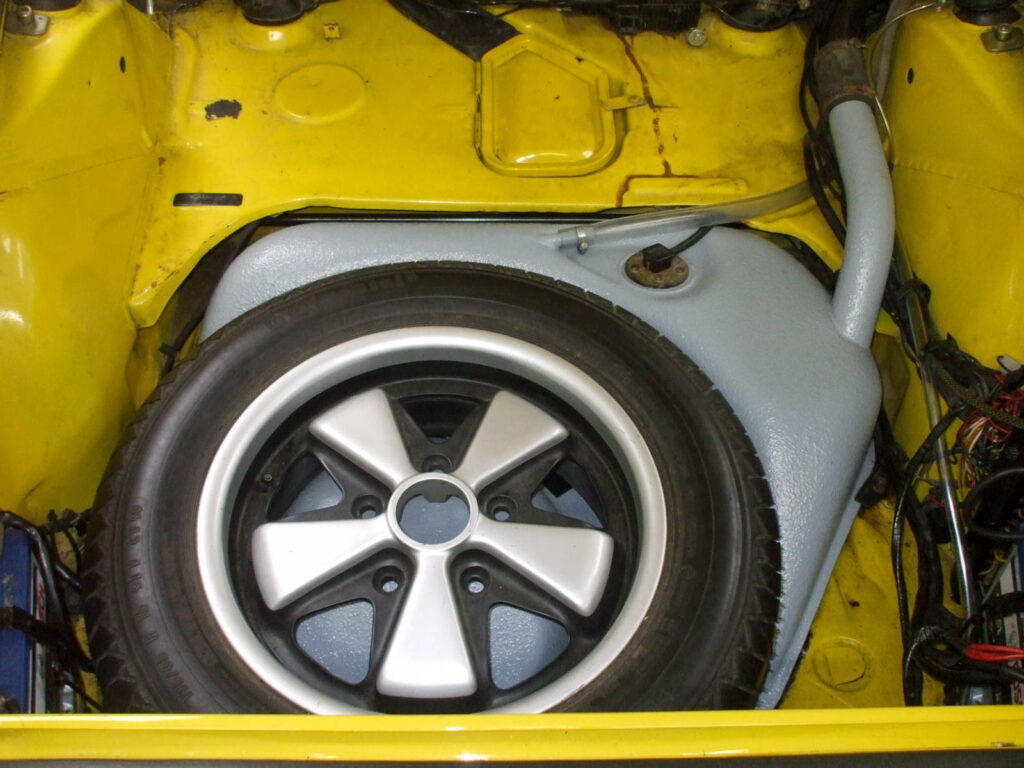An early start beckoned for my cycle ride down to Fenchurch Street Station to get myself and my bike onto the train to the far east. Shoeburyness in the far east of Essex was my destination and the purpose of my trip was to collect the Yellow Peril after its new fuel tank and associated hoses had been fitted at Sportwagen.
Despite yet another bloody slow puncture on the bike, I managed the 10 minute cycle ride from Shoeburyness Station to Sportwagen without without having to ride just on the rear wheel rim. A recent spate of punctures have elevated my bicycle wheel removal, inner tube repair and wheel reinstatement skills to F1 pit crew status. The only difference is that unlike me, the F1 pit crew members don’t seem to end-up covered in chain oil up to their armpits!
Gentleman that he is – Bruce Cooper provided fresh coffee sustenance upon my arrival whilst we discussed the many and varied woes of the world before embarking on a little tour of ongoing restoration projects.
For Porschephiles such as myself, Sportwagen is an Aladdins Cave of precious cars in various states deconstruction, metalwork resurrection and reconstruction. The pleasure of seeing such rare cars is greatly enhanced however by Bruce’s background explanation of the cars and the processes they have gone through or need to go through to achieve their required finish.
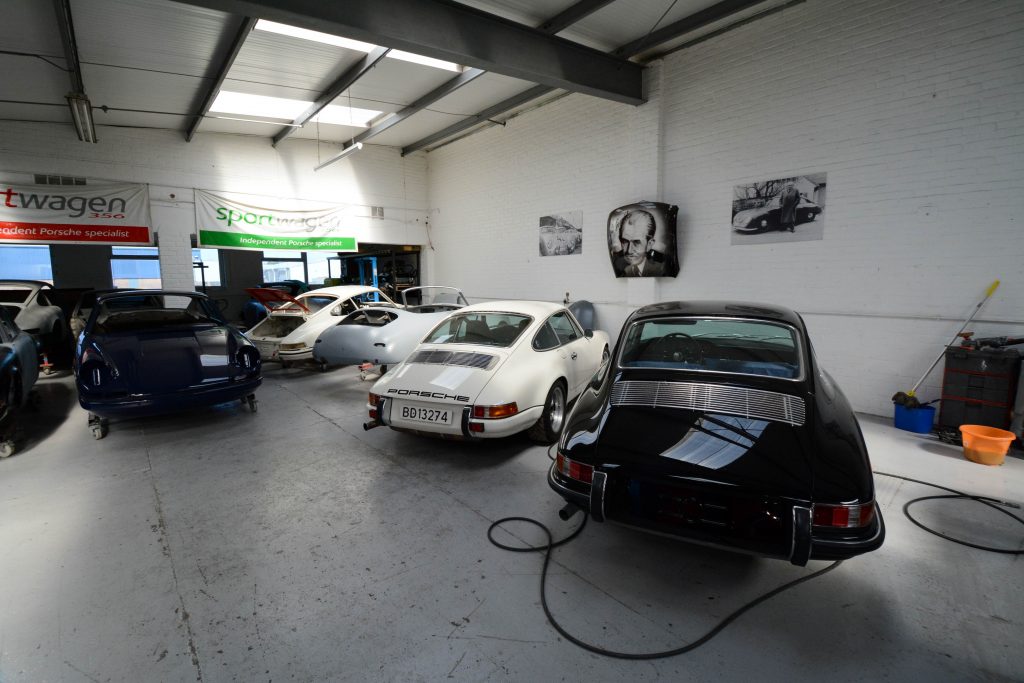
Returning cars to the condition they would have left the Porsche factory (or better) is probably the most common requirement that Bruce needs to satisfy but with Porsche manufacturing going back to 1948, this is not a straightforward process.
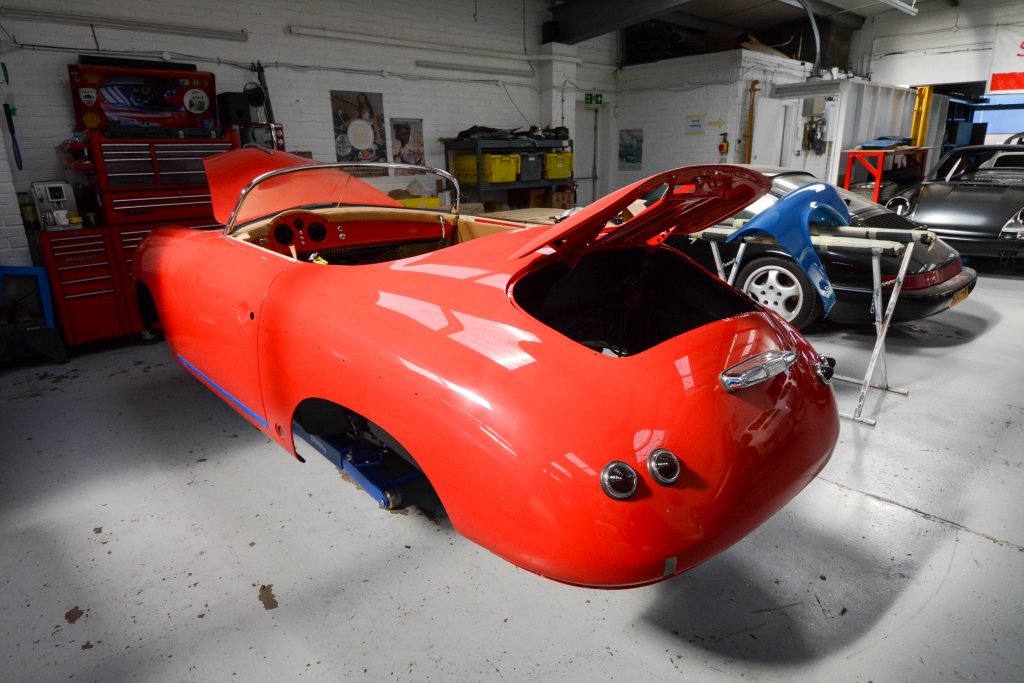
New panels can be bought for for the curvaceous 356 and for early 911’s but the amount of “adjustment” required to make them fit quite often means that it is more cost effective and more accurate to manufacture repair panels in house using such arcane devices as the English Wheel.
As case in point, Bruce pointed me towards a right hand drive 356 Cabriolet for which the entire rear-end and many other areas of the bodywork had to be hand-made by his craftsmen. Added to this was the expert fitment of more readily available proprietary panels such as floorpans and sills.
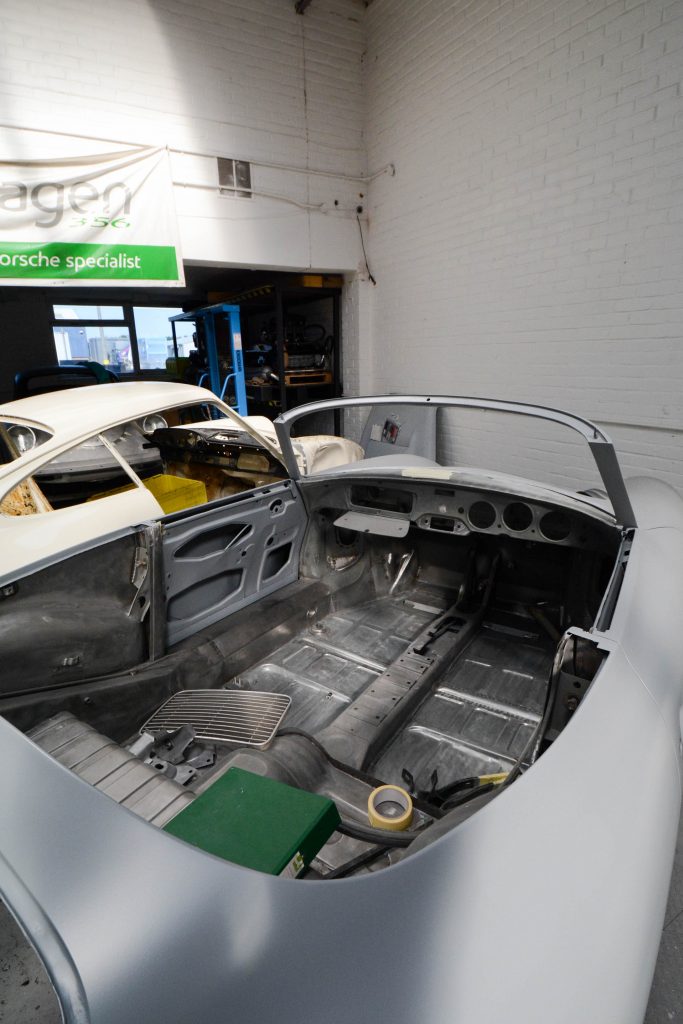
Not all cars go back to factory specification however and this can be down to a number of reasons. To start with, many cars don’t arrive with the the parts they originally left the factory with. The longevity of both the 356 and 911 models has meant that engines, gearboxes, panels, doors, seats and other interior trim have been swapped around over the years as a matter of expediency to keep cars running or to pep-up their performance.
The Yellow Peril is a good example of this as it’s a ’71 2.2L 911E fitted with a ’71 911S engine which before it was rebuilt had a rag bag of T, E and S bits on it. It’s a RHD car fitted with a LHD engine lid which has the rear wiper on the wrong side. It should have Fuchs Deep-6 wheels but instead has Fuchs Flat-6. And now Bruce tells me that the old fuel tank he has just replaced was from a SWB 911.
I’m sure the Yellow Peril is not the worst mix of bits that Sportwagen have come across.
I digress – coming back to the discussion of why owners choose not to adhere to absolute originality, some prefer to emulate rare and astronomically expensive specials such are the 911R, ST, RS, RSR etc. Such modification can be implemented as updated or backdated cars but changes in fashion sometimes results in reversals of these processes.
Other owners simply want to put their own stamp on their cars in the form of non-original colours, custom trim and externally invisible mechanical upgrades. This SWB model exemplifies this approach to deliver a sublimely beautiful Sports Purpose early 911 along with its sloping 911 script on the engine lid.
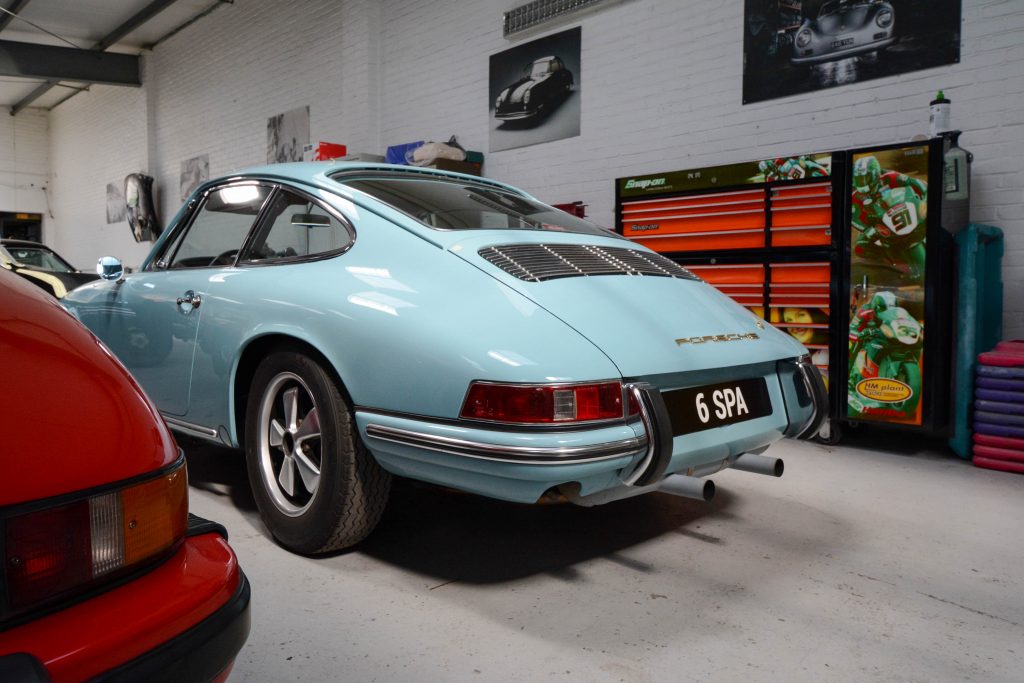
Bruce confirmed that its lovely shade of blue paint was not an original Porsche colour but if this car is anything to go by ….. it should have been. It really suits the car.
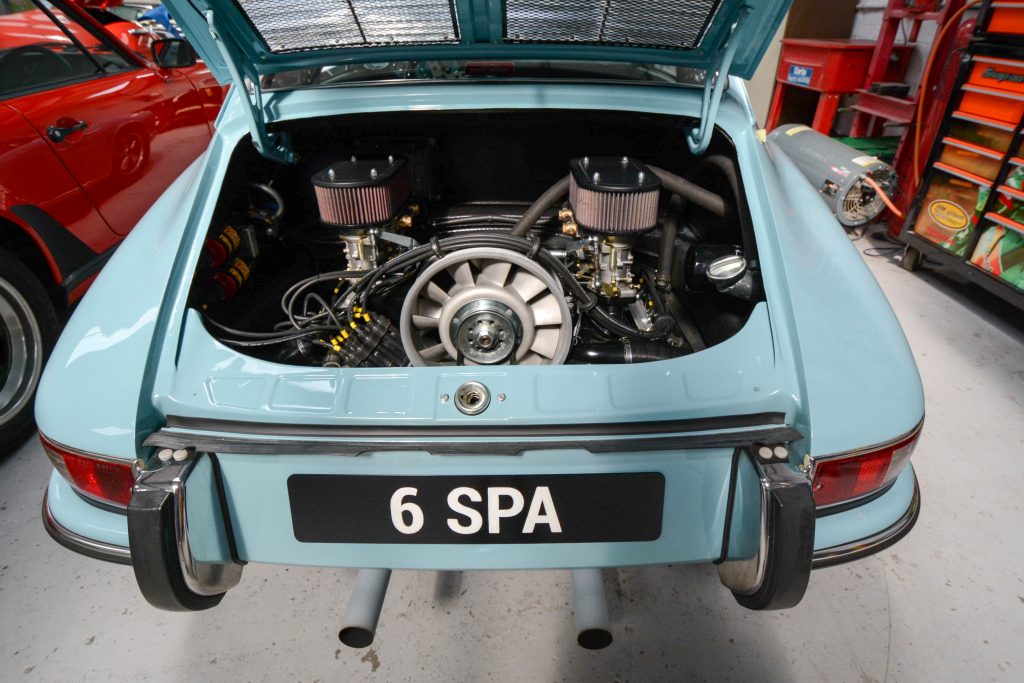
In another sensible but arguably slight digression from originality, this car features a twin-plug 2.2L engine rather than the 2.0L engine fitted prior to 1970. All that power in a SWB car on relatively narrow rubber should make for an fun ride.
My delightful journey through Porsche history around the workshop culminated with me meeting up with the Yellow Peril parked next to the roller shutter ready to wend its way back to London. I’ll miss that intoxicating aroma of Super Unleaded inside the cabin, but the wife won’t!
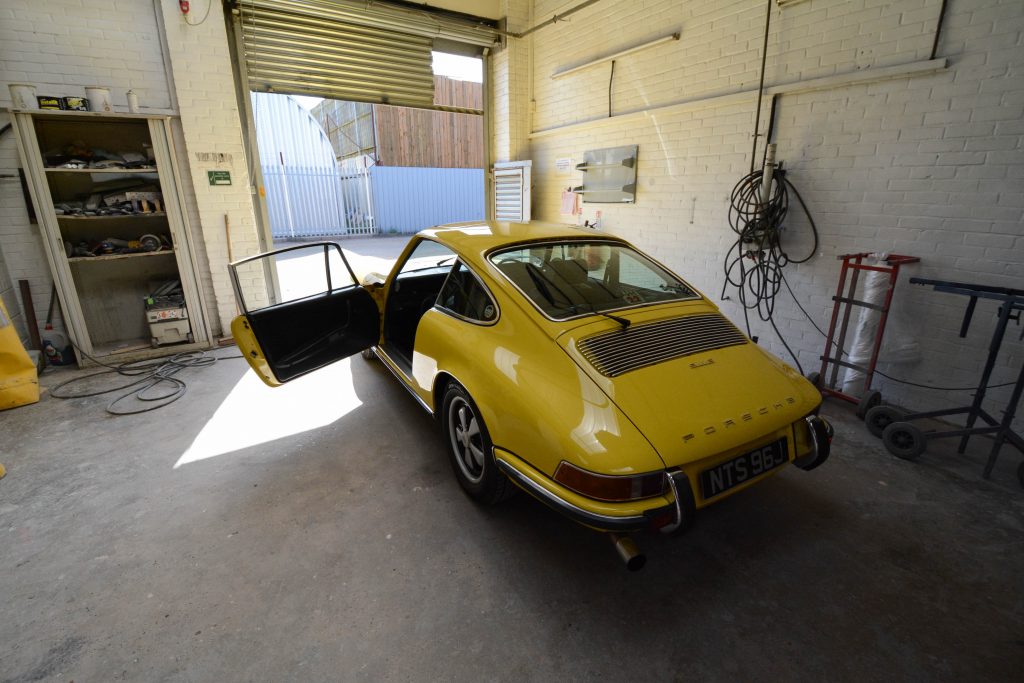
After a quick inspection of the new fuel tank and the new hoses which had replaced the decidedly dodgy ones connected the rusty old tank I proceeded to dismantle my bike in order to squeeze its component parts into the car. Front and rear wheels under the bonnet and frame behind the front seats. No bike rack ruining the car’s aerodynamics for me!!!


